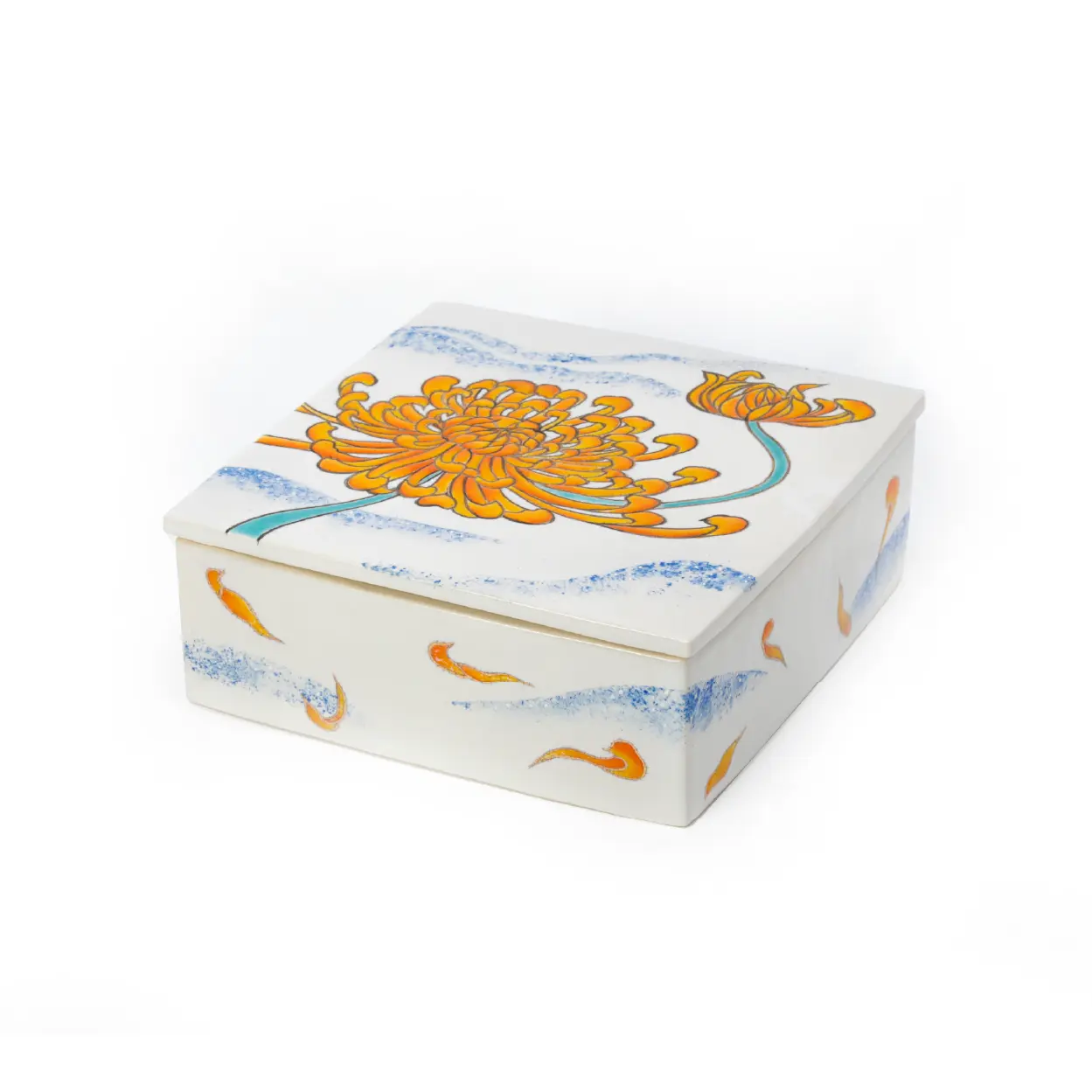
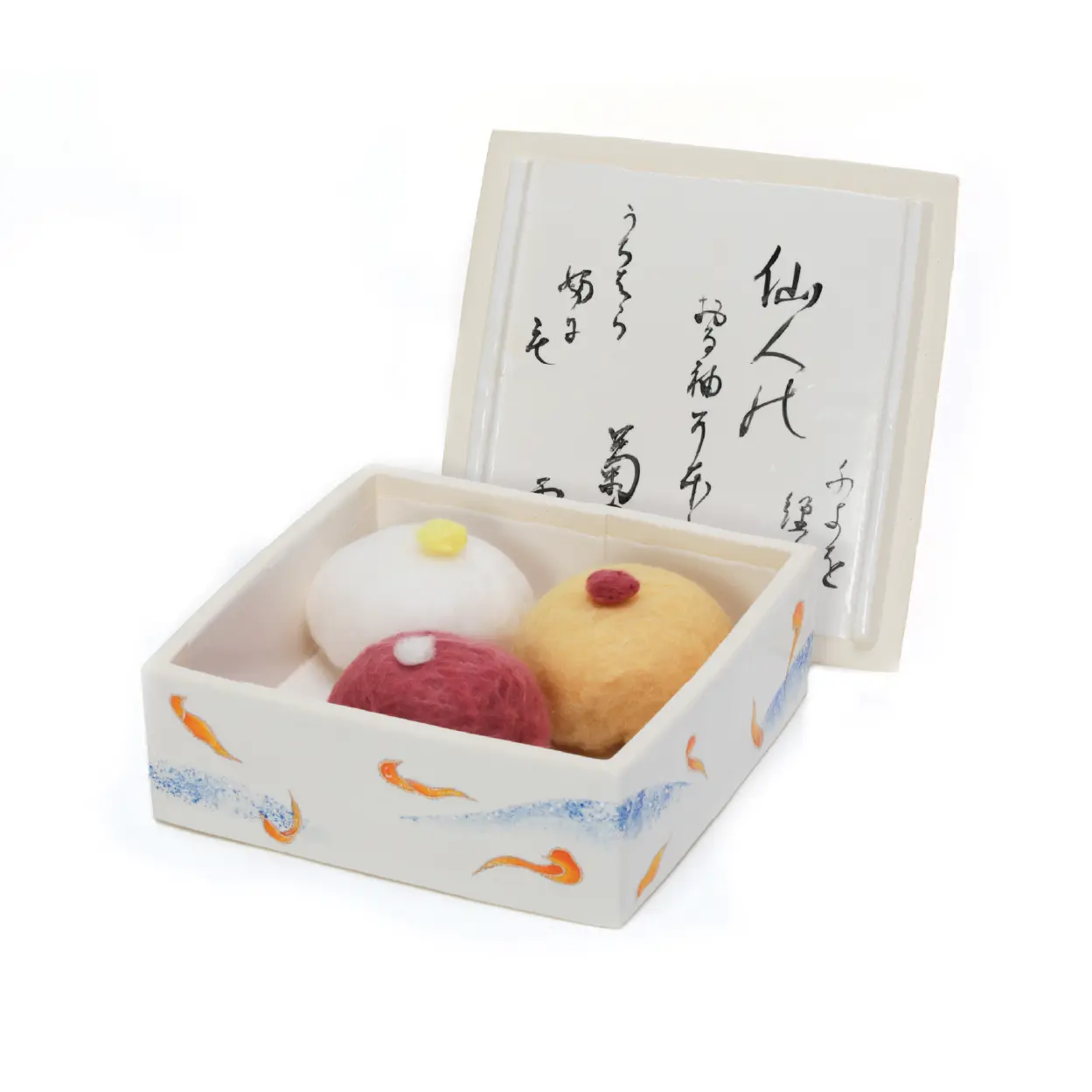
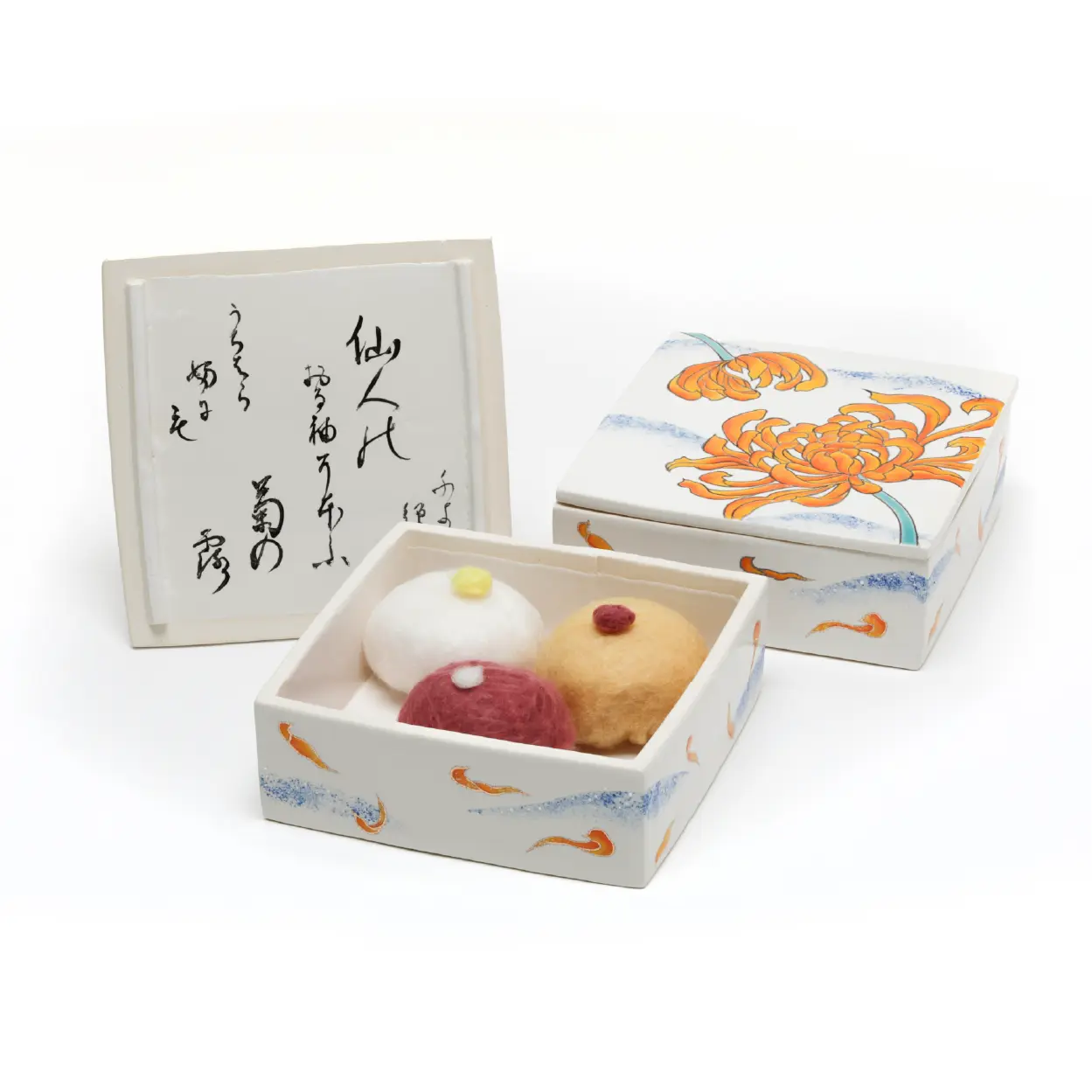



仙人の筥(やまびとのはこ)
The Hermit’s Box
陶芸家 SHOWKO
Ceramic Artist SHOWKO
衣紋道山科流若宗家 山科言親
Next Headmaster of the Emondo Yamashina-ryu Tokichika Yamashina
仙人が住むところに咲くと言われている菊の花。
その霊力を身につけるための、「重陽の節句」の儀式をモチーフに、
何度も塗り重ねては焼く技法で陶筥を制作しました。
天然染めの菊の綿、
生きとし生けるものの力を用いた伝統文化を
この時代に新しく表現しています。
Chrysanthemums are said to bloom in the places where hermits live, possessing spiritual powers.
With the ritual of the Choyo no Sekku (Chrysanthemum Festival) as a motif for obtaining this spiritual essence, I created this ceramic box using a technique of repeatedly layering and firing the glaze.
Adorned with naturally-dyed chrysanthemum cotton, this piece offers a new expression for our time—a traditional culture that utilizes the power of all living things.
仙人の筥(やまびとのはこ)
The Hermit’s Box
仕様 / Specifications
陶筥、和歌
Ceramic Box, Waka (Traditional Japanese poetry)
陶、上絵の具、真綿、蘇芳、黄檗
Sue (Pottery), Overglaze enamels, Mawata (Floss silk), Suou (Sappanwood), Kihada (Amur cork tree)
価格 / Price
440,000円(税込)
¥440,000 (tax included)
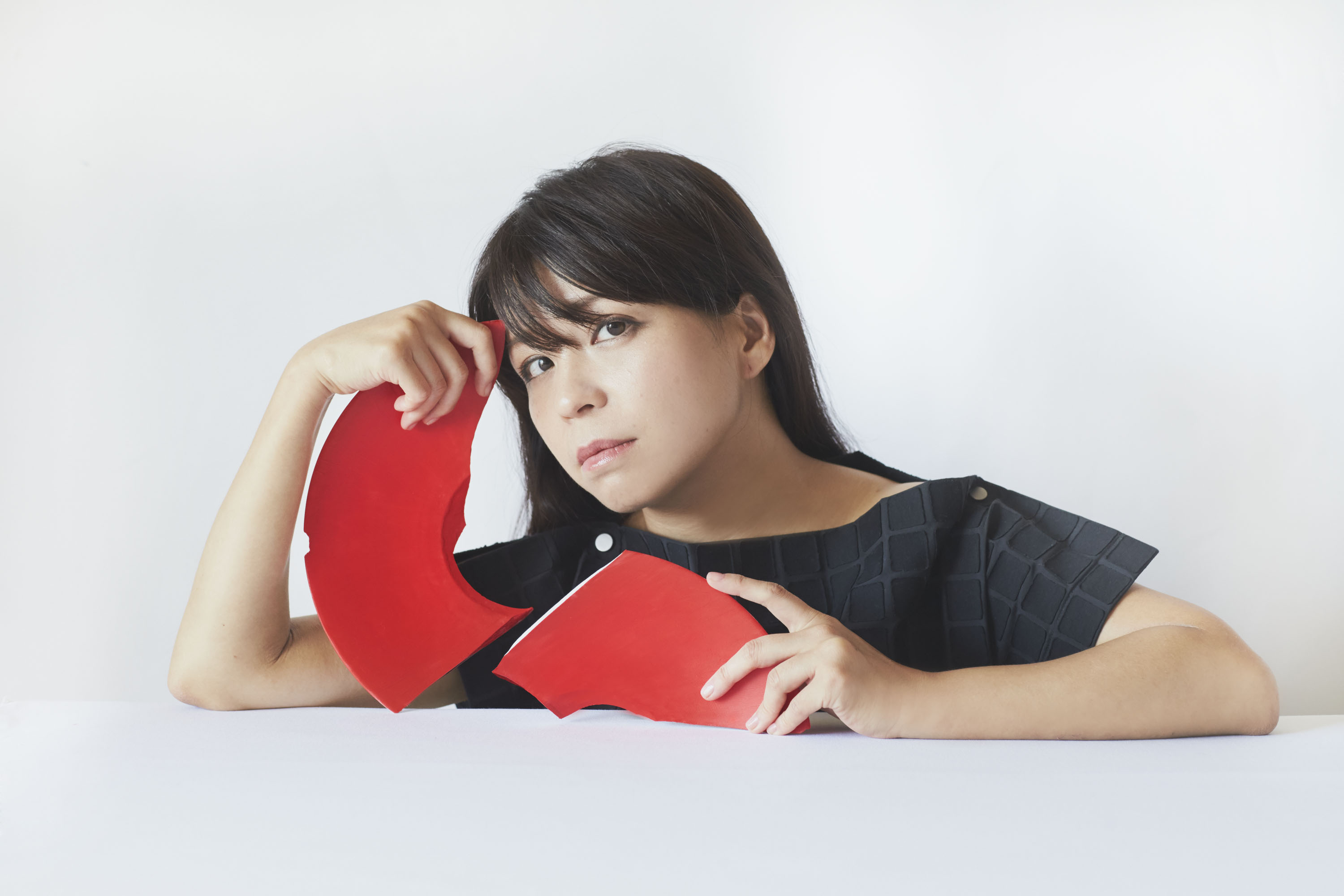
SHOWKO
SHOWKO
Born into the Makuzu ware lineage, a family of potters with a 330-year history in tea ceramics. After studying pottery in Saga, she became independent in Kyoto in 2005 and began her career as a ceramic panel artist. Leveraging her experience in graphic design, she explores the potential of ceramic vessels. In 2009, she incorporated and established SIONE, a brand with a narrative theme of “vessels that tell a story.” In 2016, she opened a flagship store near Ginkaku-ji Temple, creating a space of hospitality through her ceramic panels and other artwork. She has held exhibitions both in Japan and abroad, expanding her work from Kyoto to the world.
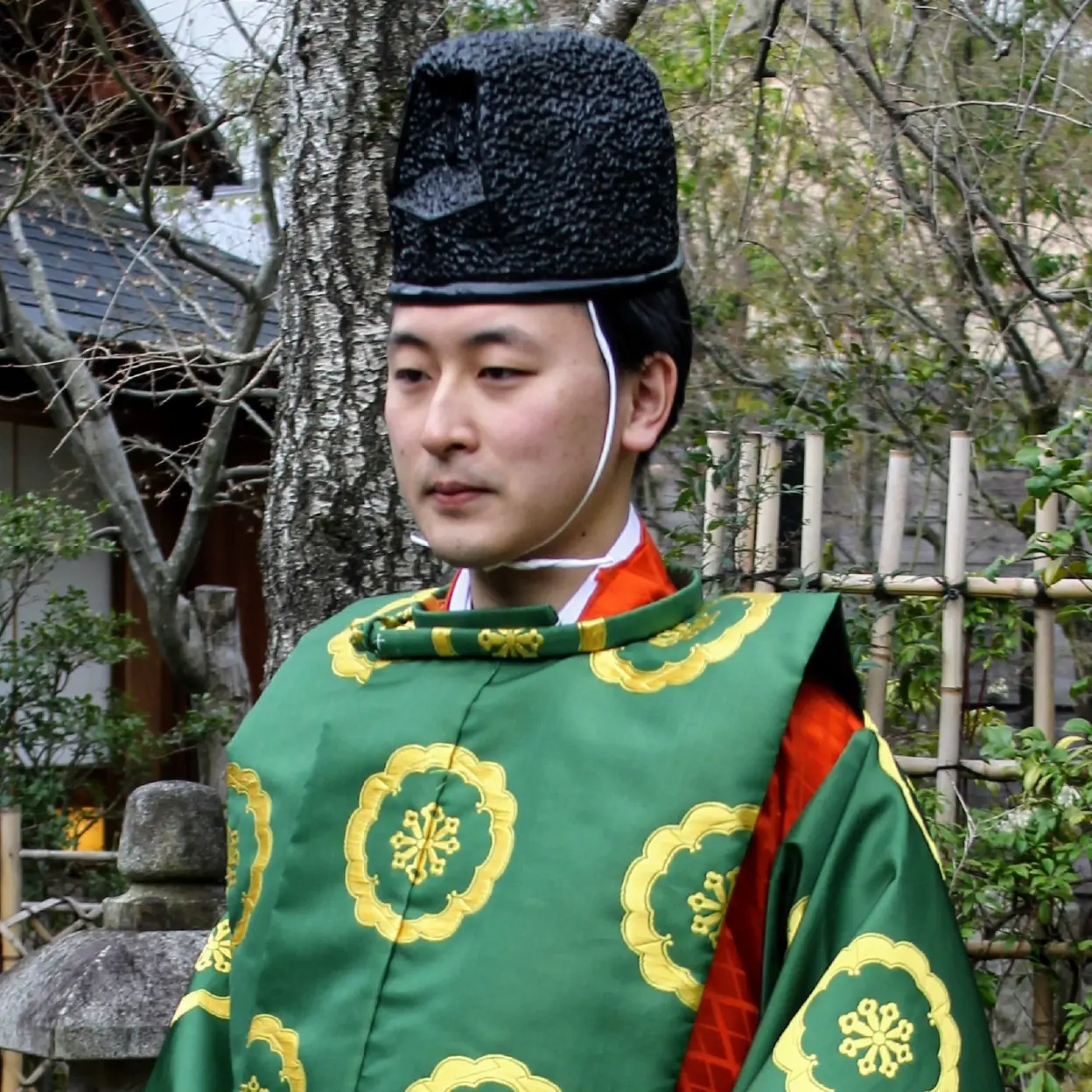
山科言親
Tokichika Yamashina
Born in Kyoto in 1995, he holds a Master’s degree from the Graduate School of Human and Environmental Studies at Kyoto University.
He is the 30th-generation successor of the Yamashina family, a former court noble family that has passed down the tradition of preparing and dressing ceremonial court attire (shōzoku) for generations. He serves as an emondo practitioner for the Three Imperial Festivals (the Kasuga, Kamo, and Iwashimizu Festivals) and the Reiwa Imperial Enthronement ceremonies.
He also appears in various media, gives lectures to corporations, government bodies, and cultural organizations, plans exhibitions, and acts as a historical consultant for television programs on customs. He is the Representative Director of the Yamashina Yusoku Research Institute and a researcher at the Doshisha University Center for the Study of Court Culture, widely engaging in activities to preserve and promote court culture.